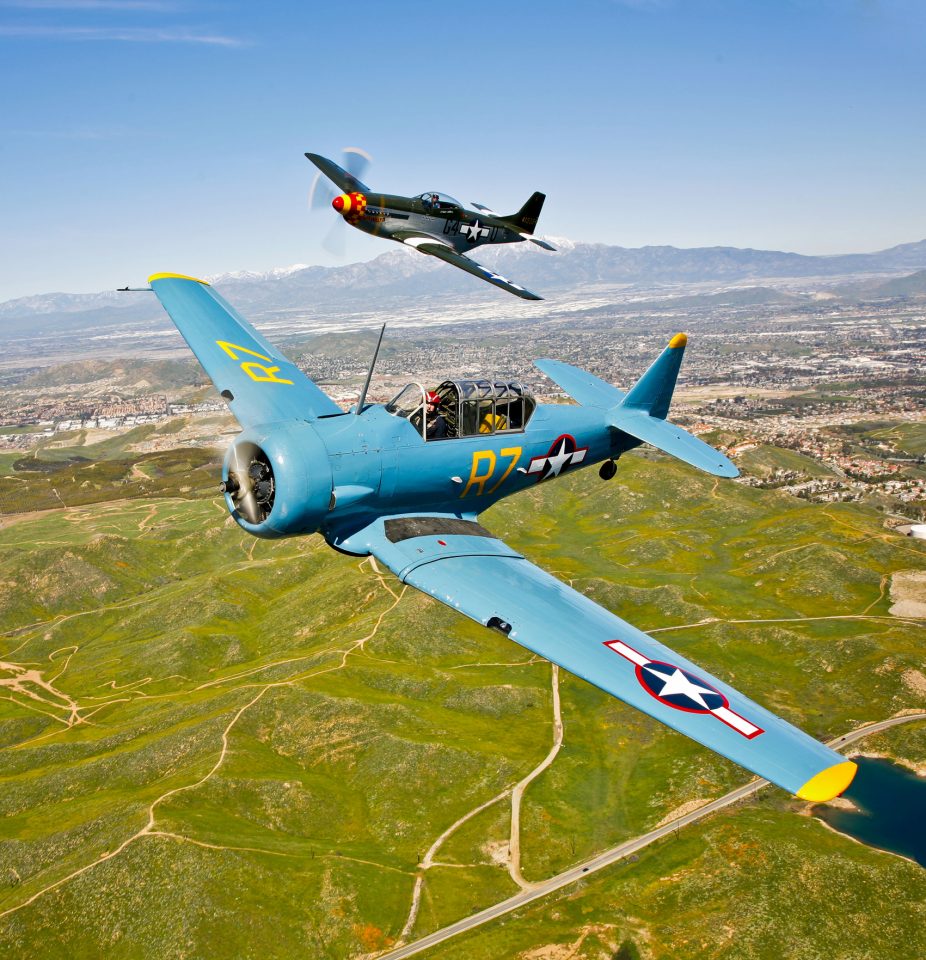
Military investment during World War II drove significant advancements in aviation. In fact, between, 1939 and 1945, the world’s air forces were estimated to produce more than 300,000 aircraft. The immediate need for skilled pilots required training aircraft that could quickly prepare student pilots for the war. Here are just a few of the famous trainers that gave World War II pilots their first taste of flight:
One of the most beloved World War II trainers is the Piper J-3 Cub. An estimated three-quarters of civilian pilots were trained in the J-3 Cub, which was used for a number of military roles such as reconnaissance and ground control. The Cub was produced in large numbers during the war as the L-4 Grasshopper, swapping out the standard “Lock Haven Yellow” color for a more neutral olive green shade.
According to the National Museum of the U.S. Air Force, 90 percent of the U.S. Army Air Forces bombardiers trained in the AT-11, the glass-nosed variant of the Beechcraft Model 18 (Twin Beech). Intended for advanced bombardier and gunnery training, the AT-11 was equipped with a bomb bay, glass nose, and two .30 caliber machine guns. More than 1,500 Beech AT-11s were built and many remained in service until the 1950s.
Also known as the SNJ, Harvard, Mosquito, or “Pilot Maker,” the North American Aviation T-6 Texan was one of the most influential trainers in WWII. A two-place advanced trainer, the T-6 was designed to prepare skilled student pilots for fighter and bomber aircraft. Several hundred thousand pilots trained in the T-6 for at least 55 different air forces around the world. Besides training, the T-6 was used as a fighter, fighter-bomber, interceptor, forward air controller, and counterinsurgency.
The Stearman was an open cockpit biplane used as a primary trainer for the U.S. Army Air Forces, U.S. Navy, and the Royal Canadian Air Force throughout the 1930s and ‘40s. The two-place biplane was powered by a 220 horsepower piston radial engine and stood at over nine feet tall. In the post-war years, surplus PT-17s were auctioned on the civilian market, where many were modified and used as crop dusters, sports planes, and for aerobatic purposes in air shows.